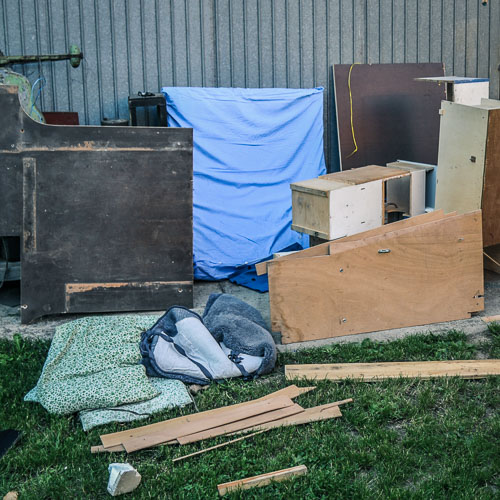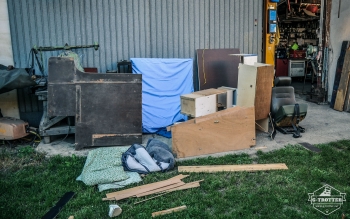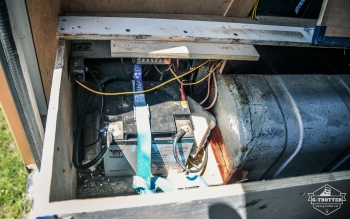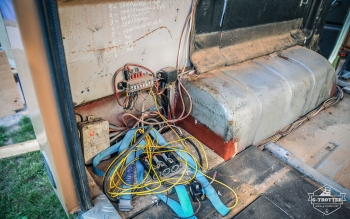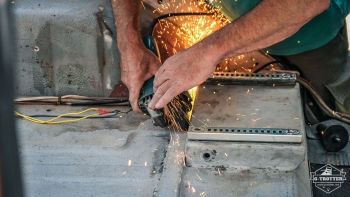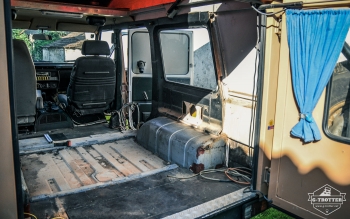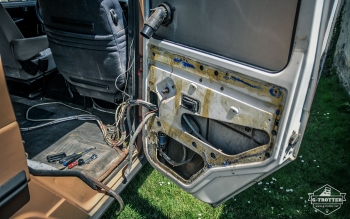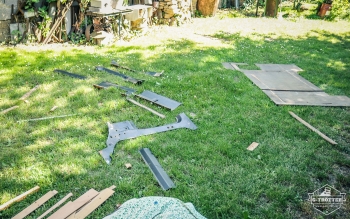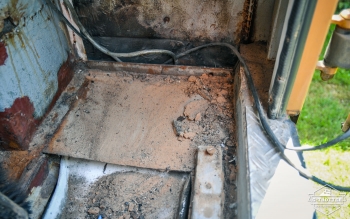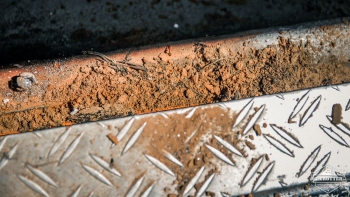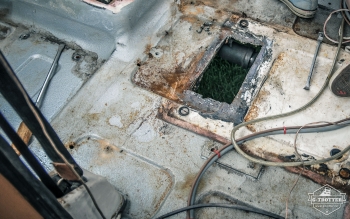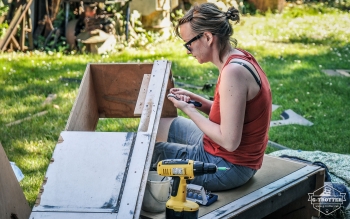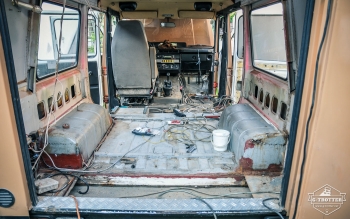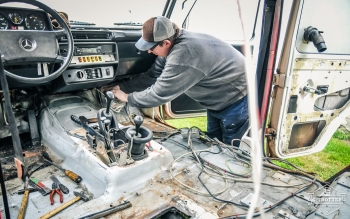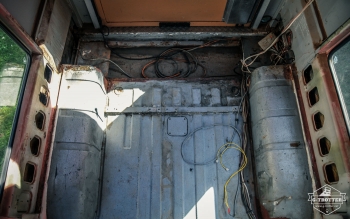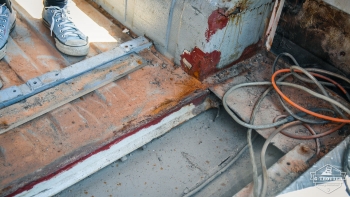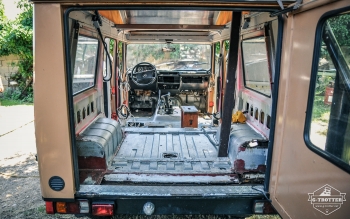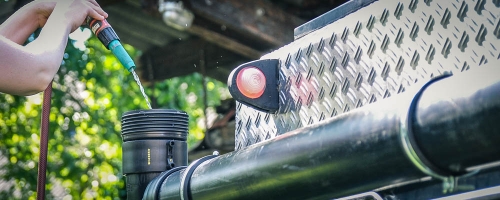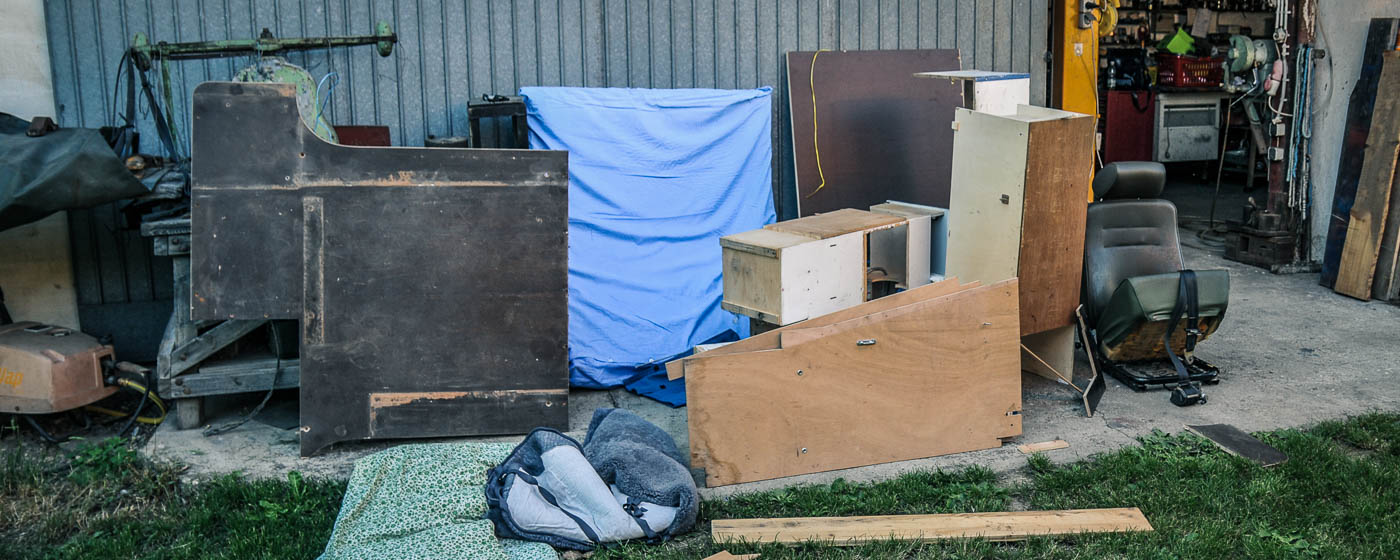
Everything must go!
Written by am
A big clean up was on the agenda. Getting rid of the old interior was liberating, but what surfaced was less pleasant.
Although we liked the arrangement of the furniture in the vehicle, it was unquestionable that the run down wooden cupboards and benches had to be removed and that we would build new ones. Indeed, both of us were very much looking forward to the construction of new furniture.
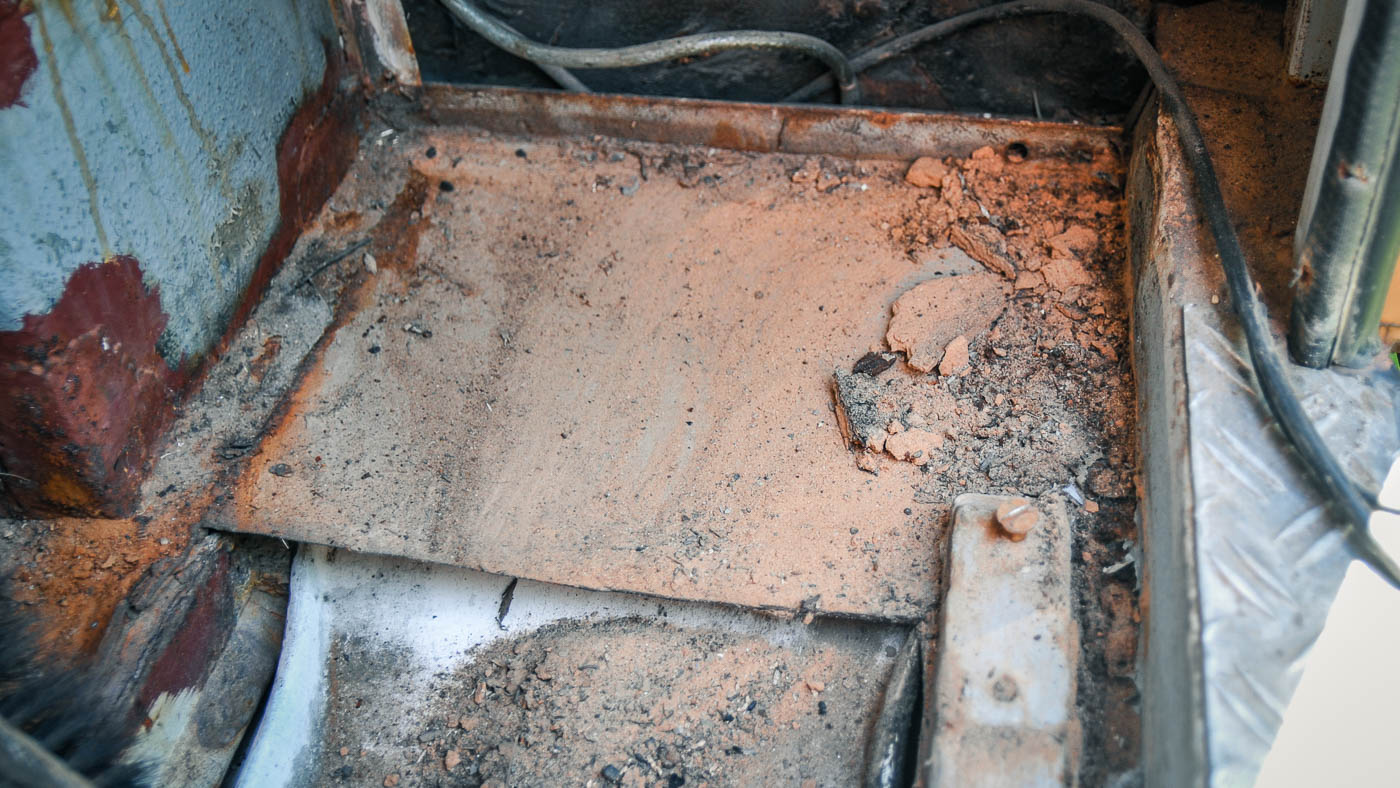 Sand, as far as the eye can reach.
Sand, as far as the eye can reach.Almost like a day on the beach
Sand. Orange, fine-grained sand was the first thing we got to see after we had gradually removed the old fixtures and the wooden floor plate. The second what surfaced was of similar color, but unfortunately not that easy to sweep away as sand: rust, lots of rust! Our new best enemy.
Legacies of the previous owner(s)
Some actions of the car’s previous owner(s) had left deep "wounds" in its bodywork. Holes in all kind of shapes and sizes (only a few were geometrically round) in the interior trim paneling were still the most harmless of all. Since the paneling had more in common with Swiss cheese than with the interior of a G-Class and because we wanted to know what was going on behind - especially with regard to corrosion - we removed all pieces of it, including the original roof lining.
We also took off all existing floor coverings, whereby we made an exceptional discovery: an opening in the body, right in the middle of the foot area of the rear seat. Our assumption was, that this originates from the vehicle's previous life as fire truck. Since we had no use for this opening, it was closed in the course of the welding work.
As we had no space and no purpose for the existing third seat, it was dismantled by hand and its console was cut out with the angle grinder.
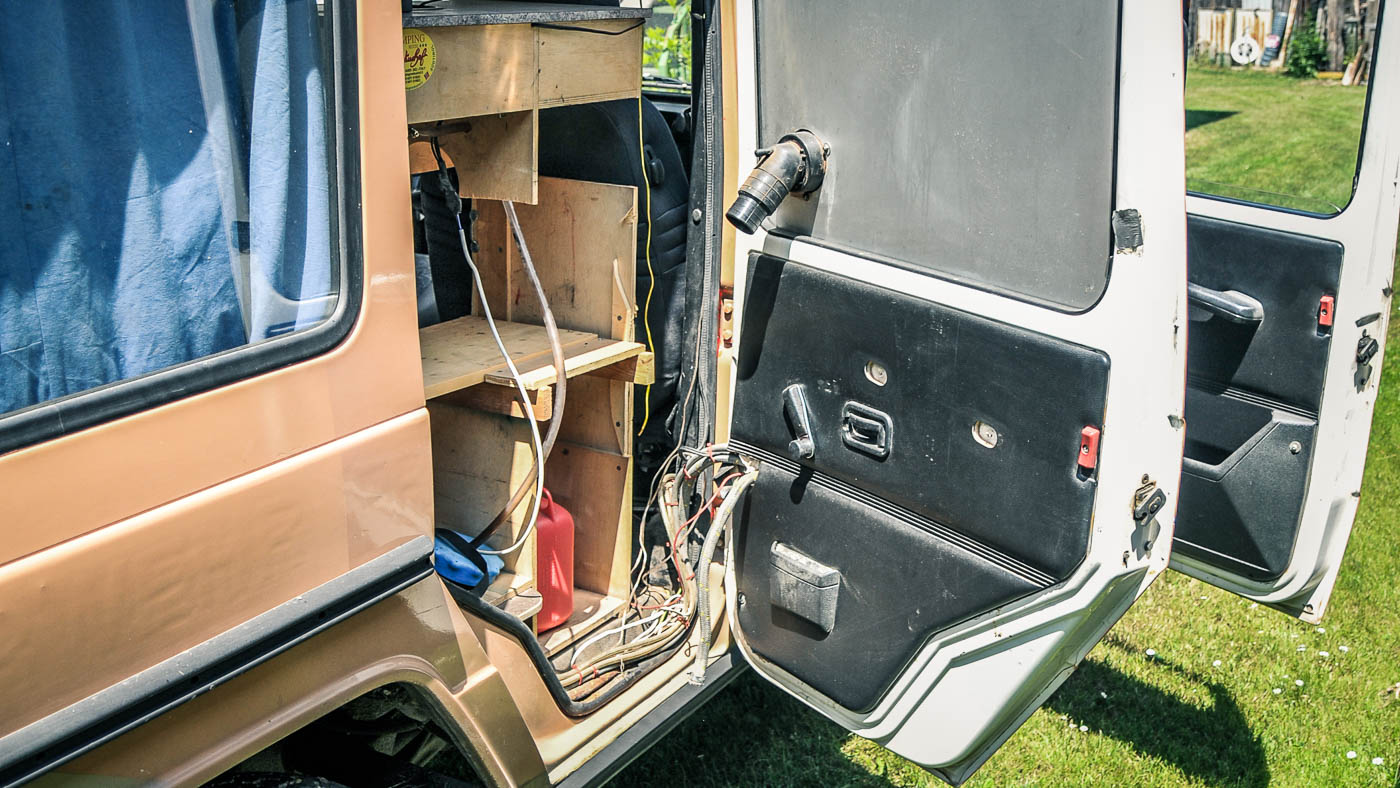 The previous owner's miserable attempt of installing an additional tank.
The previous owner's miserable attempt of installing an additional tank. Additional tank? Well, not really
An additional tank may be a reasonable approach for an overlander vehicle, but the way it should be installed in the case of our automobile, was simply negligent. For this project, the previous owner had ripped the interior trim of the right rear door. Countless cables and hoses were hanging out of the hole. When the paneling was removed, an incomplete device of a diesel pump appeared. It was more than questionable whether this device has ever worked. In addition, the window pane on this door had been replaced by a simple iron sheet from which a filler neck protruded.
Cable-chaos
When dismantling the old furniture, we detected the cabin battery, which was placed together with the fuse box in the bench. Of course this was done in a chaotic way by the previous owner, what did not surprise as anymore.
Not less chaotic was the entire cabling that came to light after we removed the furniture, the floor plate and the interior trim paneling. As far as the eye could reach, cable bundles in all imaginable colors and strenghts run criss-cross the car. Most of them were of course unlabeled. It took us several days to unravel and trace them to their sources. In fact we identified plenty of the cables as having no use at all.
What lies ahead
The first days with our G we had spent with cleaning up and getting rid of the interior. Even though we had discovered a lot of weird things and had experienced a lot of surprises, we were still not aware at this time which long and stony path lay ahead to us...

